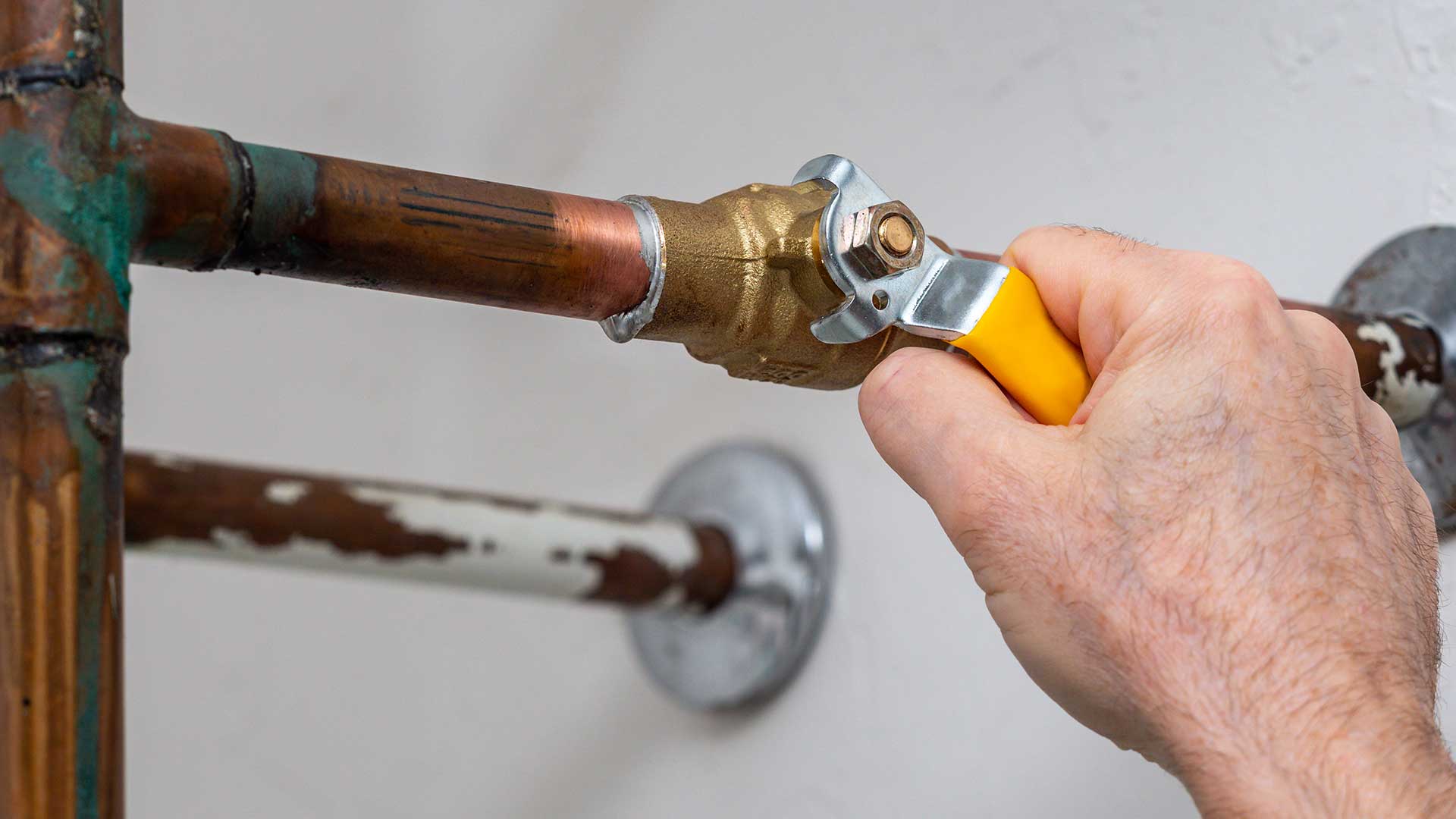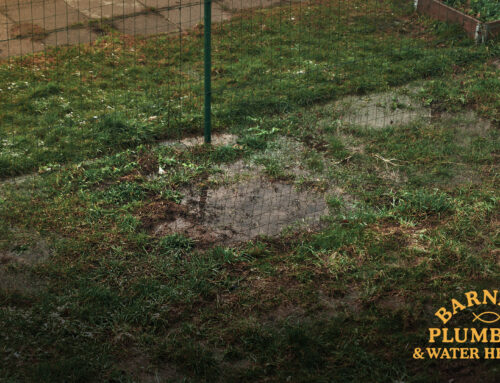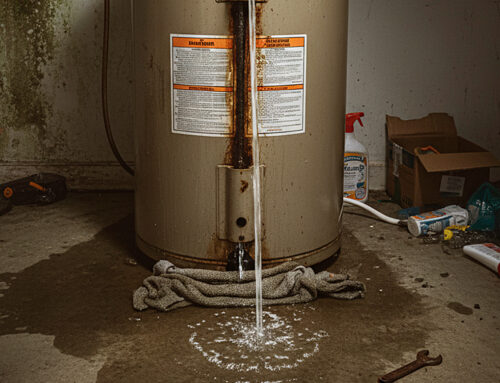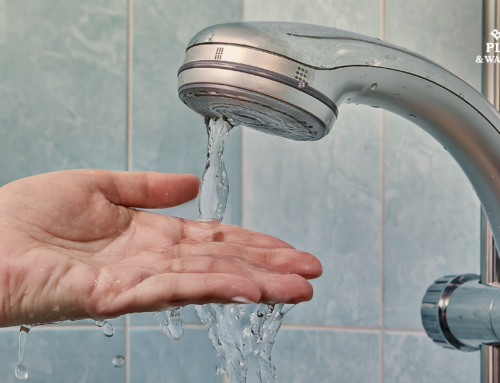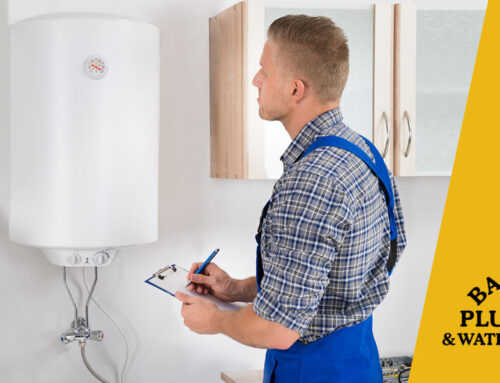Pipe bursts and water heater leaks don’t exactly reserve a time slot in your calendar. They usually happen in the most inconvenient, unexpected moments. Knowing how to quickly turn off the water supply to your home can be the difference between manageable cleanup and extensive property damage. Installing and maintaining a reliable, user-friendly water shut-off valve is a simple way to protect your home and give yourself some added peace of mind.
Let’s figure out what kind of water shut off valve your property currently has and whether or not it’s the best choice.
Why Understanding Your Water Shutoff Valve Matters
You’d assume that shutting off the water in your house would be pretty simple. (And it should be.) However, you don’t want to wait around for a water-related emergency to discover that your shutoff valve is faulty or not where you thought it would be.
A burst appliance hose or damaged pipe can flood your home with hundreds of gallons of water per hour. In no time at all, you could be left with flooded living spaces and substantial damage to your flooring, walls, and personal property.
Knowing where your water shutoff valve is and how it works helps you:
- Protect your property. If you’re dealing with a leak, the faster you can get the water supply turned off, the less of a mess you’ll have to deal with later.
- Do maintenance projects effectively. Whether you are addressing minor leaks or installing new fixtures, you need to know how to shut off the main water supply to get the job done.
How to Shut Off Your Property’s Water Supply
Follow these steps to familiarize yourself with your home’s water shutoff valve before an emergency occurs.
Step 1: Locate Your Main Water Shut-Off Valve
First, you have to figure out where your main water line shut-off valve is located. It’s typically where the main water line enters your property. In most homes, that is in the basement, crawl space, garage, or outside near the water meter.
Not sure what to look for? Here are the three most common types of water shut off valves:
- Ball Valves: These water shutoff valves are made of brass, stainless steel, or PVC materials. They generally have a flat, elongated lever handle made of metal or plastic. The design of the handle makes it easy to grip and turn.
- Gate Valves: This one looks a lot like the spigot of the garden hose you’ve got outside your home. You’ll turn the knob to lower a gate mechanism that reduces or stops the water flow.
- Automatic Shut-Off Valve: These advanced systems are attached directly to your plumbing system. They use sensors to monitor your normal water use and automatically shut off the water supply if a leak is detected. Some can be controlled with a digital app so that you don’t even need to be home to make adjustments.
Step 2: Turn Off the Water Flow
Now that you know where your water shutoff valve is, it is time to figure out how to use it. Follow the steps listed for your valve type to completely turn off your water supply.
- For Ball Valves: Turn the handle 90 degrees, or a quarter turn clockwise. When the handle runs parallel to the pipe, water flows normally. When the handle is perpendicular to the pipe, water flow stops completely.
- For Gate Valves: You’ll turn the handle clockwise to turn off the water supply. It may require several turns to shut off the water completely. The water supply should be completely off when you can no longer turn the handle.
- For Automatic Shut-Off Valves: These systems have multiple control options. If you have a smartphone app with remote control capabilities, you can shut your water off from any location. You can also turn it off manually using either levers, buttons, or switches. You’ll have to look at the user manual for your model’s specific operating procedures.
Step 3: Verify That the Water Supply is Completely Shut Off
Now it’s time to make sure the water is actually turned off. Turn on a household faucet to test. Residual water remaining in the pipes will flow briefly before the water trickles to a stop. If the water keeps flowing normally, that means it did not turn off successfully. You can retry the steps listed above or call a professional plumber to get to the root of the problem.
Steps to Maintain Your Shut-Off Valve
Even if you were able to effortlessly turn off your water during the test, it’s a good idea to make a quick water shutoff valve check-in part of your regular maintenance routine. You’ll want to:
- Always maintain easy access to the valve.
- Perform regular visual inspections to look for corrosion or signs of wear.
- Test your shut-off valve periodically to make sure it’s still working properly.
If the valve is difficult to operate or shows signs of damage, contact Barnett Plumbing & Water Heaters at (925) 294-0171 for a free, no-pressure estimate.
The Importance of Reliable Shut-Off Valves
Shutting off the water supply to your home shouldn’t be a guessing game. Unfortunately, valve quality and design greatly impact your ability to control your home’s water supply. If you have an older home, or a home with a gate valve, you should consider updating your water shutoff valve sooner rather than later.
Why We Don’t Recommend Gate Valves
First and foremost, gate valves are difficult to operate. You have to keep turning the valve clockwise until it stops turning to completely shut off the water. The problem is, the internal components of gate valves are prone to corrosion. This often makes the wheel-like handle harder to turn which can lead to incomplete shut-offs. When you are in an emergency situation, the last thing you want to do is fight with a faulty valve while you watch the water damage in your home grow.
Why Ball Valves Are The Best Manual Choice
We recommend ball valves for manual shut-off because of their easy-to-use design. The single lever requires only a quarter turn clockwise to completely turn off the water. You won’t be left guessing whether the water actually turned off. Ball valves are also more resistant to corrosion and mechanical wear and tear.
Advantages and Disadvantages of Whole-Home Automatic Shut-Off Systems
Whole-home automatic shut-off valves are an excellent addition to any home. The remote system control provides real-time alerts and complete system control, no matter where you are. Many models can automatically turn off the water if a leak is detected. These capabilities are essential for vacation properties, frequent travelers, or even rental properties. It gives property owners 24/7 leak protection from pretty much anywhere.
The downside is that automatic shutoff systems need electricity to function. Some models do have the option to add backup batteries but not all. That means, in the event of a power outage, you may not be able to use the digital capabilities. Knowing how to manually turn off your automatic shutoff system and choosing a model with backup batteries gives you an extra layer of protection in case of an emergency.
The Benefit of Having a Pressure Reducing Valve (PRV)
A guide to water shut off valves wouldn’t be complete without mentioning Pressure Reducing Valves (PRVs). These bell-shaped devices, typically located near main water line shut-offs, regulate incoming water pressure. Excessively low or high pressure can damage pipes and appliances. If you want to prevent damage, having a properly functioning PRV adds another layer of protection to your plumbing system.
How to Know If Your Water Shut-Off Valve Needs An Upgrade
Your current valve should be replaced if:
- It is outdated or unreliable: If you’ve got a gate valve, or if you had trouble turning the water off during your test run, it’s time to replace the shutoff valve. This low-cost upgrade could save you thousands in a plumbing emergency.
- You want added convenience and protection: Automatic systems provide additional security capabilities and extra peace of mind. Upgrading to a whole-home or automated system makes it possible to turn off your water even if you aren’t home.
Get a Reliable Shutoff Valve
Knowing where to find your water shutoff valve and how to use it is essential for any property owner. At the same time, knowing how to turn off the water to your home is only half the battle. You also need a water shutoff valve that you can depend on. Modern ball valves or automatic shut-off systems are the best choice for both ease of use and quality of home protection.
If you need to replace your current water shut off valve with a more dependable version, Barnett Plumbing & Water Heaters is the Tri-Valley area’s trusted plumber. We are dedicated to bringing our clients honest service and quality solutions. We will never try to sell you a product or service you don’t need. Call (925) 294-0171 for a no-pressure free in-home estimate today to get a water shut off valve that protects your home and your peace of mind.

